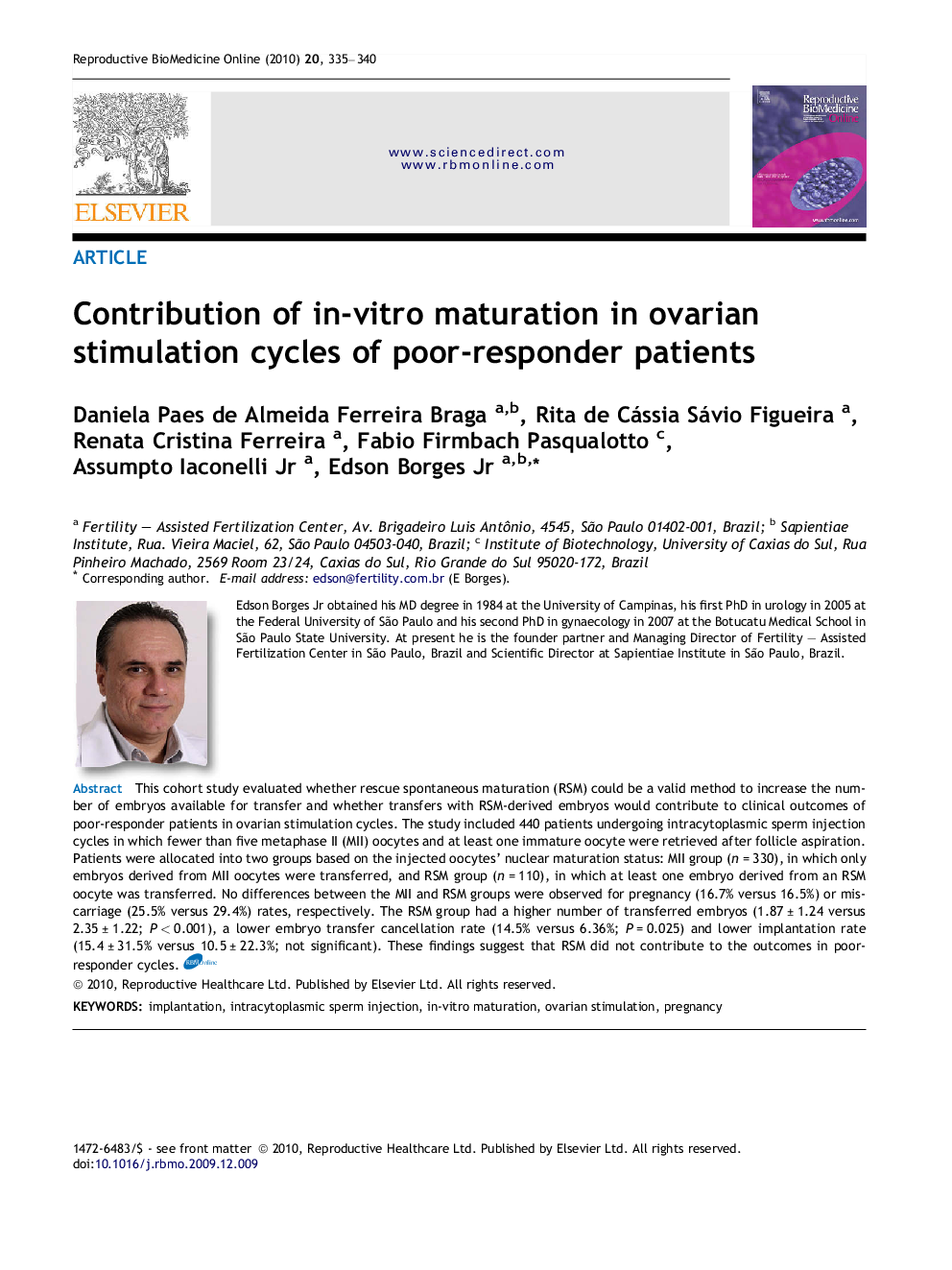| Article ID | Journal | Published Year | Pages | File Type |
|---|---|---|---|---|
| 3971535 | Reproductive BioMedicine Online | 2010 | 6 Pages |
This cohort study evaluated whether rescue spontaneous maturation (RSM) could be a valid method to increase the number of embryos available for transfer and whether transfers with RSM-derived embryos would contribute to clinical outcomes of poor-responder patients in ovarian stimulation cycles. The study included 440 patients undergoing intracytoplasmic sperm injection cycles in which fewer than five metaphase II (MII) oocytes and at least one immature oocyte were retrieved after follicle aspiration. Patients were allocated into two groups based on the injected oocytes’ nuclear maturation status: MII group (n = 330), in which only embryos derived from MII oocytes were transferred, and RSM group (n = 110), in which at least one embryo derived from an RSM oocyte was transferred. No differences between the MII and RSM groups were observed for pregnancy (16.7% versus 16.5%) or miscarriage (25.5% versus 29.4%) rates, respectively. The RSM group had a higher number of transferred embryos (1.87 ± 1.24 versus 2.35 ± 1.22; P < 0.001), a lower embryo transfer cancellation rate (14.5% versus 6.36%; P = 0.025) and lower implantation rate (15.4 ± 31.5% versus 10.5 ± 22.3%; not significant). These findings suggest that RSM did not contribute to the outcomes in poor-responder cycles.
